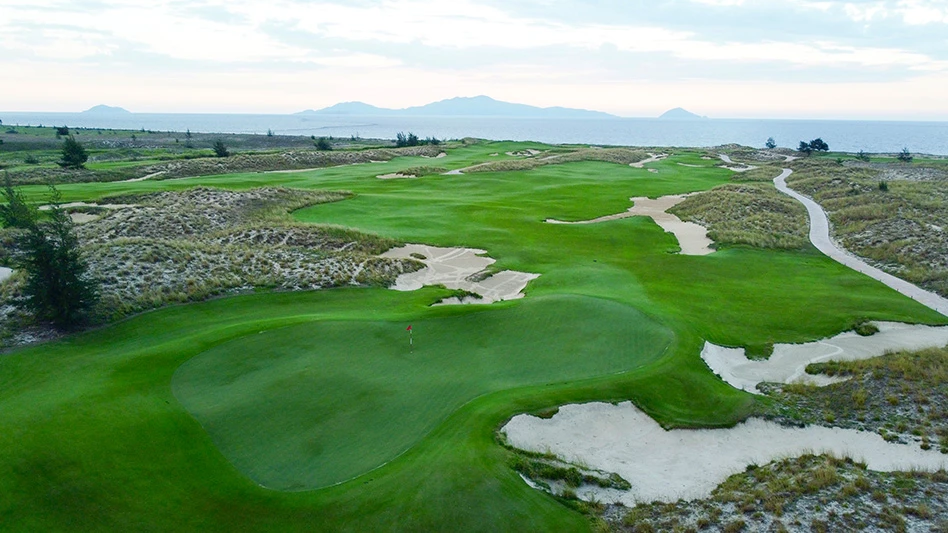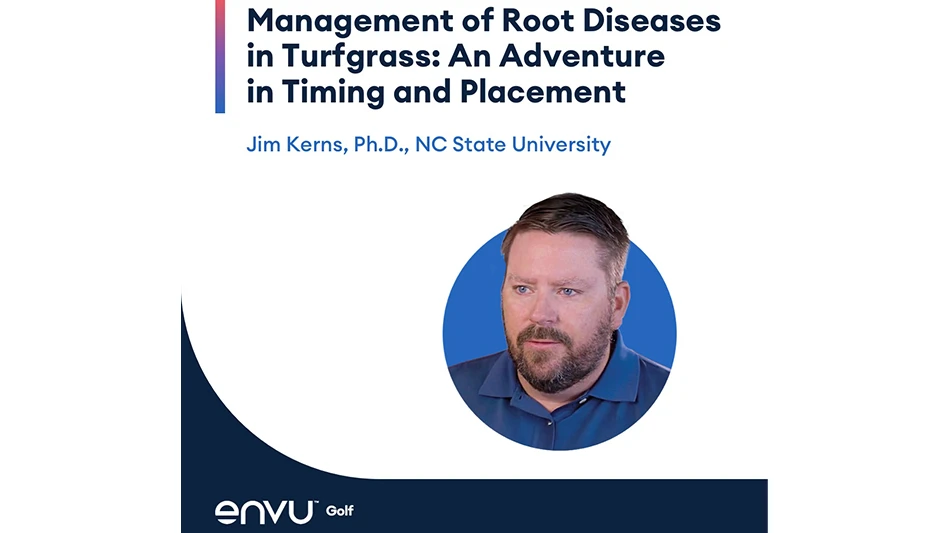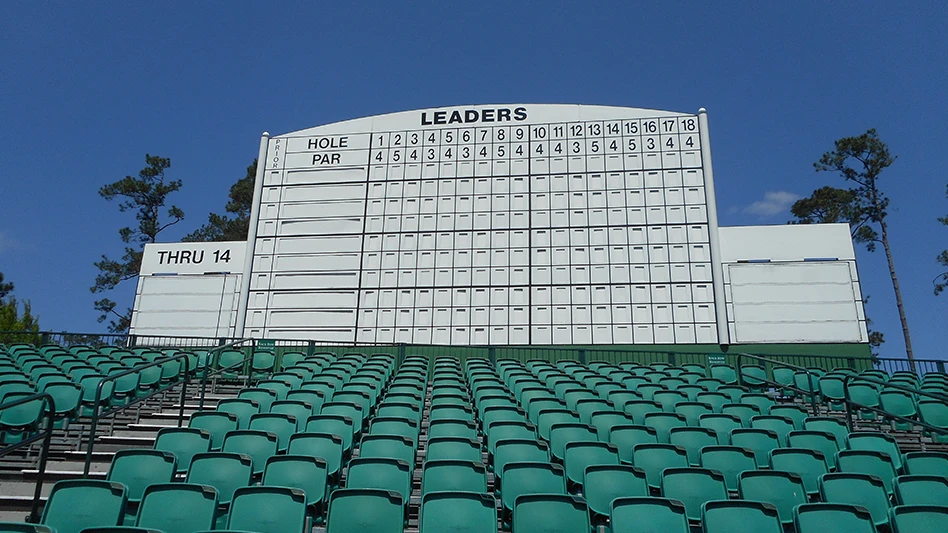Sodium (Na+) as an individual element is commonly found in irrigation water, along with many others (like calcium, magnesium, potassium, sulfur and iron, etc). Salts are actually the dry form of two or more several elements combined. When salts come in contact with water, they dissolve into their component elements once again, but now when in water, they now have a “charge.” The sum charges of dissolved salts constitute the total salinity of the irrigation water, or any other body of water, for that matter.
Salinity will be addressed as a separate topic in the next article series. This article addresses the topic of sodium, and its importance in turf and landscape management.
In addition to being one of many mineral elements that dissolve in water, sodium has other effects on plants and soils, so much so, that sodium interpretation and sodium management warrants its own “topic” on soil and water quality test reports.
Soil aspect
Sodium is actually a critical part of soil stabilization. Most people first think of sodium as an “irrigation salt” problem first and foremost. But the effects of sodium on soil are especially important.
Sodium can be problematic in turf and landscape soils because (in a nutshell) sodium can disrupt the important formation of soil clods which are critical for soil aggregation. It is highly desirable for soil particles to “stick together” to form larger soil particles. Large particles usually result in lots of air spaces between them. The result is room for soil oxygen (for root growth) and water penetration and movement.
The problem with sodium is it’s a very small molecule. When it gets “wet” with water, it retains a large bubble of water around it. This is called the radius of hydration. Small-sized elements have a large bubble around them, while larger elements (like calcium and magnesium) have “smaller” water bubbles surrounding them.
When sodium is attached to the soil particles and the soil is “wet,” the large bubbles of water surrounding each sodium molecule keeps the soil particles separated spatially. This happens because the water “bubbles” collide and stop, keeping the soil particles “suspended” more or less in between them. When this happens, the soil is referred to as a “deflocculated soil,” which results in an “unstable” soil condition.
In this case, the soil particles appear like powdered wheat flour, since the individual soil particles are not allowed to form larger solids. Therefore, the soils particles remain in their smallest sizes, since they are not allowed to form even small aggregates.
This resultant consequences occur on soils first, and then on plants secondly. Soils with high sodium levels are usually incapable of soaking up water at the surface (poor infiltration). If and when it does, the soil tends to stay wet just at the surface, with poor soil oxygen content.
Extremely shallow rooting occurs with turf and landscape plants. Unstable sodium affected soils are also highly prone to compaction, since the individual soil particles can be compressed together from external surface pressure (traffic and equipment). The end result is a decrease in the “air portion” of the soil, with the same amount or a slightly greater “water portion” left in the soil.
Warning signs of a sodium threat
A water quality test has a parameter called the sodium adsorption ration (SAR). It is a measure of the potential sodium hazard that may affect soil properties. SAR is a relative comparison of the bad guy (sodium) to the good guys (calcium or magnesium – which has “small water bubbles which allow for soil aggregation”). The important item here is “relative.” We want to have more calcium and magnesium than sodium, so the good guys outnumber the bad guys. This way there is more competition for soil attachment from calcium and magnesium, than by sodium.
SAR values of 0-5 are desirable, 5-10 are usually safe, 10-15 are a cause of concern on finer textual soils and SAR values of 18 or more are usually a predictor of an up and coming sodium problem in soils which are sandy loams, or finer in texture. Pure sands can “handle” high SAR water, because the soil particles are naturally large to begin with, and sands have less surface sights to hold onto sodium. Remember that the total amount of calcium, magnesium and sodium salts does not influence the SAR, but the relative amounts do!
The true measure of sodium in the soil is determined from a soils lab test report. The soils test should have a component called the Exchangeable Sodium Percentage (or ESP). This is an estimate of the percentage of the soils to retain sodium, compared to all other elements which are positively charged (like sodium).
Therefore, ESP is calculated as the amount of sodium divided by the sum of the soil adsorbed sodium, calcium, potassium and magnesium. In essence, it is the batting average of sodium in the soil, which we want in this case, to be low.
If the ESP is 15 percent or more, most soils will have single particle displacement (deflocculated and unstable). On clay and silt type soils, the ESP should be 10 or less. On pure soils, high ESP values are less significant, once again because of the preponderance of large soil particles to begin with.
Soil maintenance of sodium effected soils
How can I change my soil to correct and prevent an unstable soil condition from a high sodium content soil? What needs to take place is a chemical substitution between the soil particle and the attached (adsorbed) sodium.
Luckily, sodium has only one positive charge (Na+), while calcium and magnesium have two (Ca++, Mg++). These “double-charged” particles have a stronger attraction to the soil particle, which has a negative outside charge to begin with.
Remember, opposites attract each other. Therefore, any element with two charges will be favored over the element with just a single charge.
Along comes calcium. When calcium is added to the soil, we are adding a relatively inexpensive double-charged element. The calcium, in time, will trade hands with the sodium and remove it from the outside of the soil particle, and allow it to wash away.
The type of calcium product and amounts required are important concepts. Calcium carbonate, also called Ag-limestone, is not soluble in soils which have a pH of 7.8 or above. Gypsum, (calcium sulfate) is way more soluble than Ag-limestone, and is the most popular calcium source for soil sodium management in a high pH soil. Thankfully it’s not that expensive. It takes several months for gypsum to slowly dissolve from rain and/or regular irrigation, but when it does, the calcium will “pull off” the sodium, which then gets washed away as sodium sulfate.
Other forms of calcium compounds are expensive and can burn the turf or cause temporary soil drought problems. An example is calcium chloride. While the “calcium” is instantly available, the chloride can burn turf and cause temporary, but severe, water stress availability problems in the soil.
Gypsum needs to be applied on a regular basis, since sodium is most likely being added on a regular basis with the irrigation water. The amount of gypsum required to keep the soil ESP values at acceptable low levels depends on how high the ESP value is, and the capacity of the soil to hold positively charged particles. The letter is called the cation exchange capacity (CEC).
Sands have little CEC, loams are intermediate, while silts and clay-type soils have high CEC capacities. Soils with high organic matter contents (usually in the surface 2.0 inches) also have a high CEC capacity. The higher the CEC and the ESP, the more calcium (gypsum) you will need to lower the ESP to desirable levels. GCI
By David M. Kopec, Ph.D. University of Arizona

Explore the May 2010 Issue
Check out more from this issue and find your next story to read.
Latest from Golf Course Industry
- The Aquatrols Company hires marketing manager
- Renovating Bredemus in West Texas
- Renovation starts at Okatie Creek GC at Sun City Hilton Head
- The Fittest Podcast in Turf: Episode 1
- New 6-hole course debuts in Oklahoma
- GCSAA announces Grassroots Ambassador Leadership Award recipients
- Reel Turf Techs: David Gummo
- PBI-Gordon promotes two to executive level





